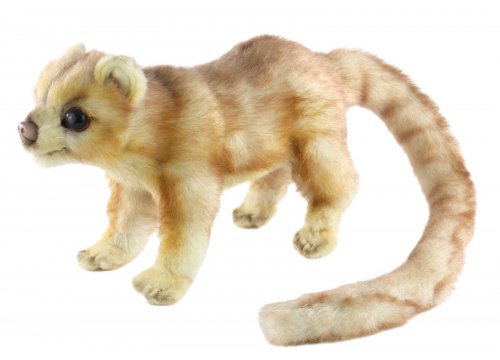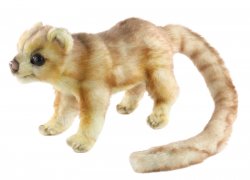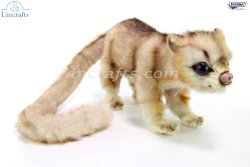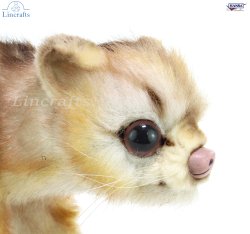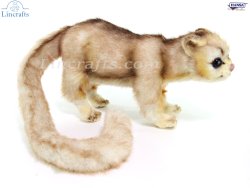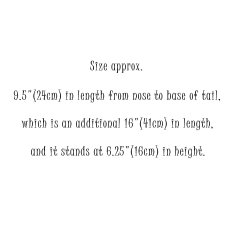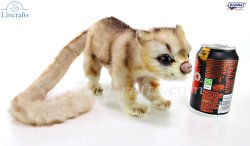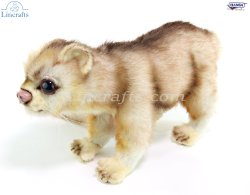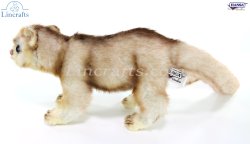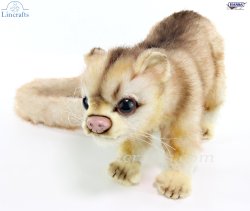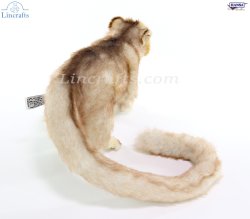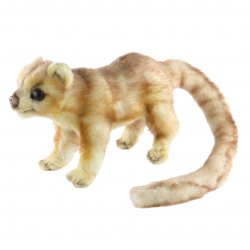Delivery
Returns
Soft Toy Kinkajou by Hansa (24cm) 6227
Read More
Product description
Kinkajou soft toy by Hansa has is made from a shaded fabric with airbrushed detailing. It has internal support deep in its legs and neck to aid balance and change the posture slightly.
It has an educational tag attached that gives you facts about the Kinkajou along with a small booklet that shows some of the other Hansa creations.
It is made from the finest synthetic materials to the highest standards.
Size approx. 9.5"(24cm) in length from nose to base of tail which is an additional 16"(41cm) in length and it stands at 6.25"(16cm) in height.
- European safety standards EN71 BS5665
- Carries the CE label so it safe for children (not under 36 months)
- Surface washable
- Quality item with airbrushed details
Kinkajou Facts
Another name for a Kinkajou is a Honey Bear because of their claws and their rounded ears.
Kinkajous are the only species of the genus Potos
Kinkajous are arboreal and possess many arboreal adaptations, such as a long prehensile tail, nimble clawed fingers, and fully reversible hind feet.
The peak activity of a Kinkajou is usually between 7 p.m and midnight, and again an hour before dawn. During the day, kinkajous sleep in tree hollows or shaded tangles of leaves, avoiding direct sunlight.
Studies have shown that 90% of a Kinkajous diet consists of fruit. The other ten percent is made up of leaves, flowers, and various other herbs. On rare occasions they eat eggs, hatchlings, insects, and small vertebrates.
Interestingly, kinkajous are important pollinators. As they travel from flower to flower, drinking nectar, the flower’s pollen sticks to the kinkajous face and smears off on the next flower.
Kinkajous live in small social groups that usually consist of two males, one female, and related offspring. Members of the same group sleep together during the day in a shared nest or den and emerge at dusk to groom and socialize. They wander off to feed alone for most of the night but come back together in the morning to sleep.
Kinkajous are highly vocal, emitting screams, barks, and a variety of softer sounds, including some described as “sneezes.”
Kinkajous breed throughout the year, giving birth to one or occasionally two small babies after a gestation period of 112 to 118 days. A mother kinkajou takes full responsibility for caring for her young(s). After one or two weeks, the baby’s eyes open. It begins to eat solid food at eight weeks. By this time, the youngster can hang by its tail. It is able to climb with confidence when it is about three months old.
Although kinkajous may look like monkeys or ferrets, they are not related to those animals.They are related to olingos, coatis, raccoons, and the ringtail and cacomistle
Delivery & returns
Delivery
Orders will be dispatched within 1 working day, same day if ordered before 8.30am, by either FedEx (to available areas Royal Mail Tracked where not) or within 1 working day by Special Delivery (or FedEx next working day Mon - Fri) if express delivery is chosen at checkout to mainland UK. Express delivery is not available for a Saturday delivery.
Click here to read Sparkle's Delivery Policy
Returns
Any items returned must be in original condition with all tags attached within 30 days.
We will notify you upon receipt and the appropriate refund will be authorised as per the Distance Seller Regulations.
Please contact us prior to returning the item to the following address and include a copy of the order.
Lincrafts
Horizons
High Toynton
Horncastle
LN9 6NL

